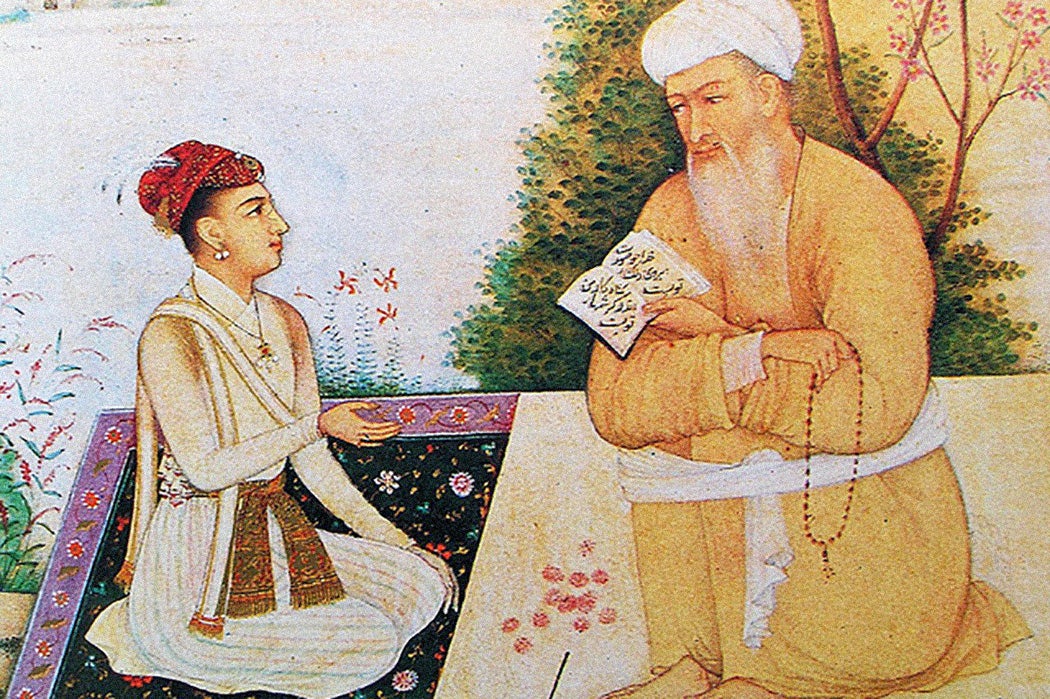Anyone interested in meditation today can find all sorts of books explaining techniques from across the world’s religions. But, in many times and places, these methods have been secret, divulged only in person and only to students who have reached a certain level of spiritual development. South Asian and Islamic studies scholar Scott Kugle describes how that began to change for Sufi Muslims in the Mughal Empire.
Historically, Kugle writes, Sufis have seen meditation as an important practice requiring a knowledgeable guide. Manuals for religious practice explained that meditation was necessary for developing an internal experience of God. But they were almost always silent about how to meditate.
Kugle argues that this taboo was broken by Dara Shikoh, a Muhgal crown prince who would be executed by his younger brother, Muhi al-Din Muhammad (later Emperor Aurangzeb). Sufi masters of the Qadiri order had gradually given the prince instructions, eventually reaching techniques intended for advanced practitioners only. Yet, in 1645, Dara recorded them in a text generally translated as the Compass of Truth, expressing the hope that any reader would be able to use them.
Dara claimed to have received a divine command to write the book “to show plainly the way to reach God for those who search for guidance toward the truth.” In defiance of the vast majority of Sufi teachings on the subject, he suggested that readers could use the techniques he described to reach an advanced spiritual state without a living guide.
While the Compass of Truth firmly described the Qadiri order’s teachings as the single correct meditation path, just a generation later a different Sufi writer, Shaikh Kalimullah (Kalim Allah), offered a very different approach. Living in Shahjahanabad (present-day Old Delhi), Shaikh Kalimullah was primarily part of the Chishtī order, but he was also initiated into several other Sufi traditions, including Qadiri. Kugle writes that the very title of Shaikh Kalimullah’s meditation manual, Alms Bowl, suggests that it contained “morsels of meditation practice” drawn from various Sufi sources. Shaikh Kalimullah wrote that he received these morsels from many spiritual teachers and guides; readers could pick and choose from them to find the most appetizing and nourishing practices.
“For Sufis, everything said, everything done and everything felt can be meditation,” he wrote, “On condition that it leads them to remember God and stay awake and aware.”
Weekly Newsletter
Unlike Dara Shikoh, Shaikh Kalimullah argued that it’s “unthinkably rare” for a person to reach an advanced spiritual state without a guide. So, why did he write the book at all? Kugle suggests that he may have sought to counter the Qadiri-centric Compass of Truth with an alternative text based on a broader view of Sufi techniques.
Soon more Sufi meditation manuals followed, and both the Alms Bowl and the Compass of Truth were reprinted frequently in the following centuries. Today, you can still find them at the bookstore alongside all the other meditation books.
Support JSTOR Daily! Join our new membership program on Patreon today.







